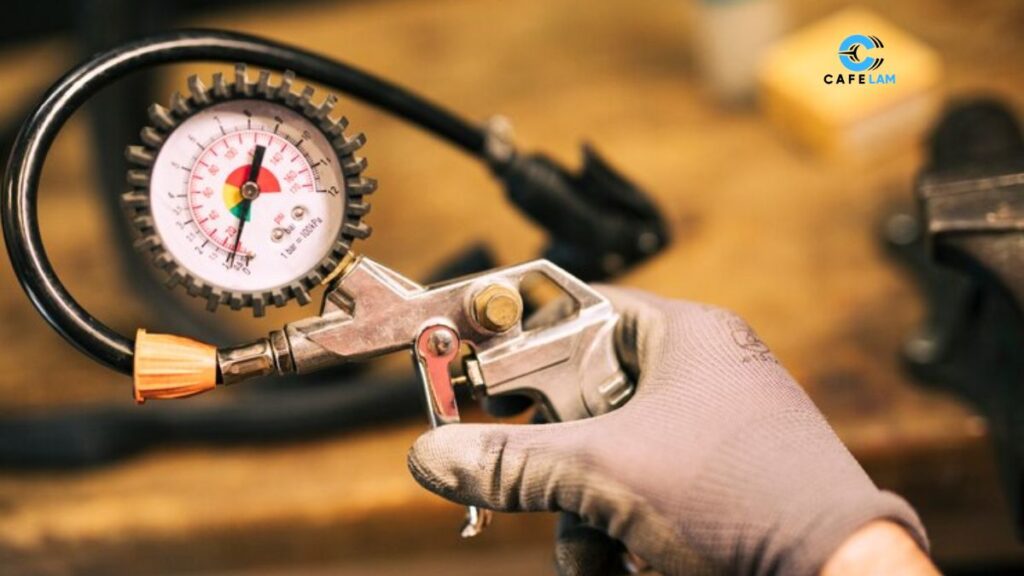Vacuum gauges, or Vacumetros, are indispensable instruments in various scientific and industrial applications. These devices are designed to measure pressure in a vacuum environment, which is essential for processes that require precise control of atmospheric conditions. From laboratories to manufacturing plants, vacuum gauges play a crucial role in ensuring operational efficiency and accuracy.
What is a Vacuum Gauge?
A vacuum gauge is a device used to measure the pressure in a vacuum system. Unlike standard pressure gauges that measure positive pressure, vacuum gauges are calibrated to measure pressures below the atmospheric level (negative pressure). This capability makes them essential for applications where maintaining a specific vacuum level is critical.
Types of Vacuum Gauges
There are several types of vacuum gauges, each suitable for different pressure ranges and applications. The most common types include:
- Mechanical Vacuum Gauges:
- Bourdon Tube Gauges: Utilize a coiled tube that straightens as pressure decreases, moving a needle to indicate the vacuum level. Suitable for low to moderate vacuum levels.
- Diaphragm Gauges: Use a diaphragm that deflects with pressure changes. Ideal for low vacuum measurements.
- Thermal Conductivity Gauges:
- Pirani Gauges: Measure pressure based on the thermal conductivity of gas, which changes with pressure. Useful for medium vacuum ranges.
- Thermocouple Gauges: Operate similarly to Pirani gauges but use a thermocouple to measure temperature changes caused by pressure variations.
- Ionization Gauges:
- Cold Cathode Gauges: Measure pressure by ionizing gas molecules and collecting ions on an electrode. Suitable for high and ultra-high vacuum ranges.
- Hot Cathode Gauges: Use a heated filament to ionize gas molecules. These gauges are very accurate for ultra-high vacuum measurements.
- Capacitance Manometers: Measure pressure based on changes in capacitance caused by diaphragm deflection. They are highly accurate and suitable for a wide range of vacuum levels.
Applications of Vacuum Gauges
Vacuum gauges are used in various fields, including:
- Scientific Research: Essential in laboratories for experiments requiring controlled vacuum conditions, such as electron microscopy, mass spectrometry, and surface science studies.
- Industrial Processes: Used in manufacturing processes like semiconductor fabrication, vacuum coating, and packaging, where precise vacuum control is crucial for product quality.
- Medical Applications: Vital in medical devices such as vacuum pumps used in surgeries, suction equipment, and in the production of pharmaceuticals.
- HVAC Systems: Employed in heating, ventilation, and air conditioning systems to monitor and maintain optimal vacuum levels in refrigerant systems.
- Automotive Industry: Utilized in the testing and maintenance of various automotive components, including brakes and air conditioning systems.
Choosing the Right Vacuum Gauge
Selecting the appropriate vacuum gauge depends on several factors:
- Pressure Range: Determine the vacuum level you need to measure. Different gauges are optimized for different pressure ranges.
- Accuracy: Consider the precision required for your application. High-precision tasks may need more advanced gauges like capacitance manometers or ionization gauges.
- Environmental Conditions: Assess the operating environment, including temperature, humidity, and potential exposure to corrosive gases, which can affect gauge performance.
- Cost and Maintenance: Balance the cost of the gauge with its maintenance requirements and lifespan. Some advanced gauges may be more expensive but offer lower long-term maintenance costs.
Conclusion
Vacuum gauges are vital tools across numerous industries, providing essential data to maintain and control vacuum environments accurately. By understanding the different types of vacuum gauges and their applications, users can select the right instrument to meet their specific needs, ensuring efficiency and precision in their operations. Whether in a high-tech laboratory or an industrial setting, vacuum gauges contribute significantly to advancements in technology and production quality.
FAQs
What is a vacuum gauge?
A vacuum gauge, or vacuumeter, is a device used to measure pressure levels in a vacuum system. Unlike standard pressure gauges, vacuum gauges are designed to measure negative pressure, or pressures below atmospheric level.
What are the different types of vacuum gauges?
There are several types of vacuum gauges, each suited for different pressure ranges and applications:
- Mechanical Vacuum Gauges:
- Bourdon Tube Gauges
- Diaphragm Gauges
- Thermal Conductivity Gauges:
- Pirani Gauges
- Thermocouple Gauges
- Ionization Gauges:
- Cold Cathode Gauges
- Hot Cathode Gauges
- Capacitance Manometers
How do mechanical vacuum gauges work?
Mechanical vacuum gauges, such as Bourdon tube and diaphragm gauges, use mechanical elements that move in response to pressure changes. The movement is then translated into a readable value on a dial.
What applications require vacuum gauges?
Vacuum gauges are used in various fields including:
- Scientific research (e.g., electron microscopy, mass spectrometry)
- Industrial processes (e.g., semiconductor fabrication, vacuum coating)
- Medical devices (e.g., surgical suction equipment, pharmaceutical production)
- HVAC systems (e.g., refrigerant monitoring)
- Automotive industry (e.g., brake testing, air conditioning systems)
How do I choose the right vacuum gauge for my needs?
When selecting a vacuum gauge, consider the following factors:
- Pressure Range: Ensure the gauge can measure the required vacuum level.
- Accuracy: Determine the precision needed for your application.
- Environmental Conditions: Consider the operating environment, including temperature and potential exposure to corrosive gases.
- Cost and Maintenance: Balance the initial cost with the maintenance requirements and lifespan of the gauge.
What is the difference between thermal conductivity gauges and ionization gauges?
- Thermal Conductivity Gauges (like Pirani and thermocouple gauges) measure pressure based on the thermal conductivity of gases, which changes with pressure.
- Ionization Gauges (like cold cathode and hot cathode gauges) measure pressure by ionizing gas molecules and collecting the ions on an electrode. They are suitable for high and ultra-high vacuum ranges.
Can vacuum gauges be used in high-temperature environments?
Some vacuum gauges are designed to withstand high temperatures, but it depends on the specific gauge type. Capacitance manometers and certain types of ionization gauges can be more resistant to high temperatures. Always check the manufacturer’s specifications for operating temperature ranges.







